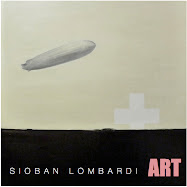
Olympia, Édouard Manet, 1863, Musée d'Orsay, Paris
I‘ve just returned from the College Art Association Conference in Chicago, where I got to cram even more about art into my already crowded brain. I love when something old becomes new again. In this case it is Edouard Manet.
I remember studying this painting in college. I remember that Olympia is an important document in the development of modern art. I know that Manet is arguably the first modern painter. What’s amusing is that all of the socio/historical/aesthetic reasons that convinced me then that this was an important work of modern art have recently been amended. In truth, what I previously barely noticed, appears to be the lynch pin of this work’s and Manet’s modernity.
Certainly, the 19th century’s ascension of the middle class drove the desire for and the accumulation of objects. The devotional, narrative and didactic were no longer requirements. While those elements may still exist within a work, they didn’t have to. A painting or sculpture could exist just to be looked at. This objectness required an audience, and this was new.
In addition, Manet’s reductive form and use of color were revolutionary. Consider his marvelous blacks. A shadow reduced to a single black plane, a void, still perfectly describing form.
Then, there is the subject. As an undergrad at an all-women’s college, Olympia loomed large in the feminist psyche. First of all, she was a courtesan - an elevated class of prostitute - shocking subject matter! Then there was her nakedness rather than her nudity; her unapologetic gaze; her sexual freedom; the flip attitude of her dainty shoes.
But what Olympia truly declares is, “I am a painting, and I know that you are looking at me.” It is not the courtesan that does this. Her gaze is distracted and self-absorbed. She could just as easily be looking at a mirror. What confirms our presence is the cat - the cat! Unlike all of the other elements in the painting, it is the cat that engages the viewer.
Even in the scores of socio/psychological evaluations speculating the painting’s symbolism, each asserts that the cat reacts to and with the viewer. It is that assertion that demonstrates the self-awareness of this object, the painting, as an object, and that is the key.
Time to return to the 19th century and more Manet, I think…






.jpg)

